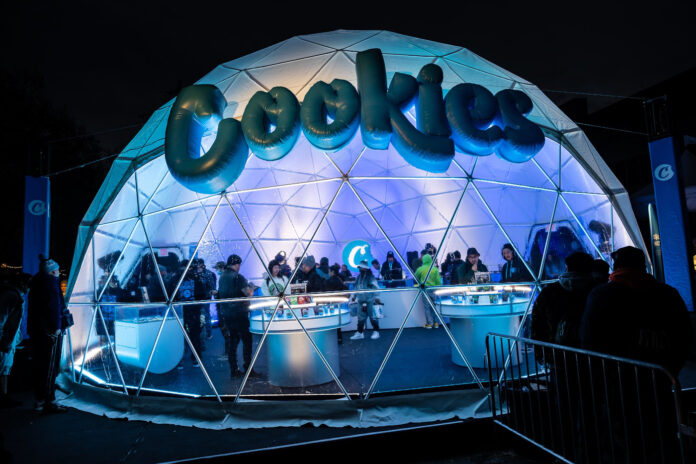The United States claims the global title when it comes to conference and exhibition space, with an aggregate of 73.7 million square feet, according to PricewaterhouseCoopers. That’s a lot of space to fill, but American companies are doing a fine job in that regard — to the tune of spending about $24 billion per year for trade-show display booths. And that’s only a small portion of total trade show expenses.
The business-to-business event market in the United States generated more than $15.7 billion in 2019 — almost half the global total. However, the coronavirus pandemic hit the industry hard in 2020, dropping revenue by about two-thirds. Now that the pandemic is at least moderately subdued, the industry is expected to bounce back this year and rake in $18.5 billion by 2023, according to Statista.
There’s a lot of money circulating in the trade-show game, and most of it comes out of the pockets of exhibitors and attendees. Nearly half of trade-show revenue comes from attendee admission fees; booth space accounts for about one-quarter. The average attendee spends $657 per show. Exhibitors, on the other hand, can spend hundreds of thousands of dollars per outing. Although some local or regional shows may charge as little as $2,000 for a standard ten-by-ten spot, space at the wildly hyped entertainment and technology extravaganza South by Southwest (SXSW) can run as much as $135,000. In 2013, Samsung spent a whopping $850,000 on a 25,000-square-foot space at the Consumer Electronics Show.
Those figures represent just the tip of the iceberg in trade show expenses. Exhibitors also must budget for staffing, travel, promotional materials, and contact-tracking software, as well as booth construction, shipping, and drayage, among other expenses. According to design-and-construction firm Exponents, the average company spends 31.6 percent of its overall marketing budget on trade shows annually.
Is the expense worth the return? The majority of marketers believe it is. In 2019, the average trade show marketer attended, exhibited at, or sponsored 28.6 regional, 16.9 national, and ten international events. Sixty-six percent said they were confident participating benefitted their business; only 15 percent doubted they derived significant return on investment, according to industry trade journal Exhibitor.
What’s more, 93 percent are optimistic face-to-face events will continue to be effective promotional venues. According to the Center for Exhibition Industry Research, 94 percent of marketers plan to participate in at least four shows in 2022, with a 200-square-foot booth being the most common size under consideration.
Booth types
Booths come in four main styles: inline, peninsula, perimeter, and island. Each has its own best-use scenario, advantages, and challenges.
Inline booths
These are the most common and often the least expensive to build, transport, set up, and take down. A typical show-floor configuration places inline booths in rows back to back and side by side with clearly defined aisles between the rows. This maximizes exhibit space for the show organizer but often makes it difficult for exhibitors to stand out from the crowd. Most shows limit the height of inline booths, and space to interact with prospects and customers is limited unless the booth is on the end of a row (where space is more expensive, if it’s available at all). All those aspects can become even more challenging if the booths on either side or across the aisle attract crowds or are noisy. Inline booths generally are eight to ten feet deep but can be any width; 10 x 10 and 10 x 20 are common dimensions.
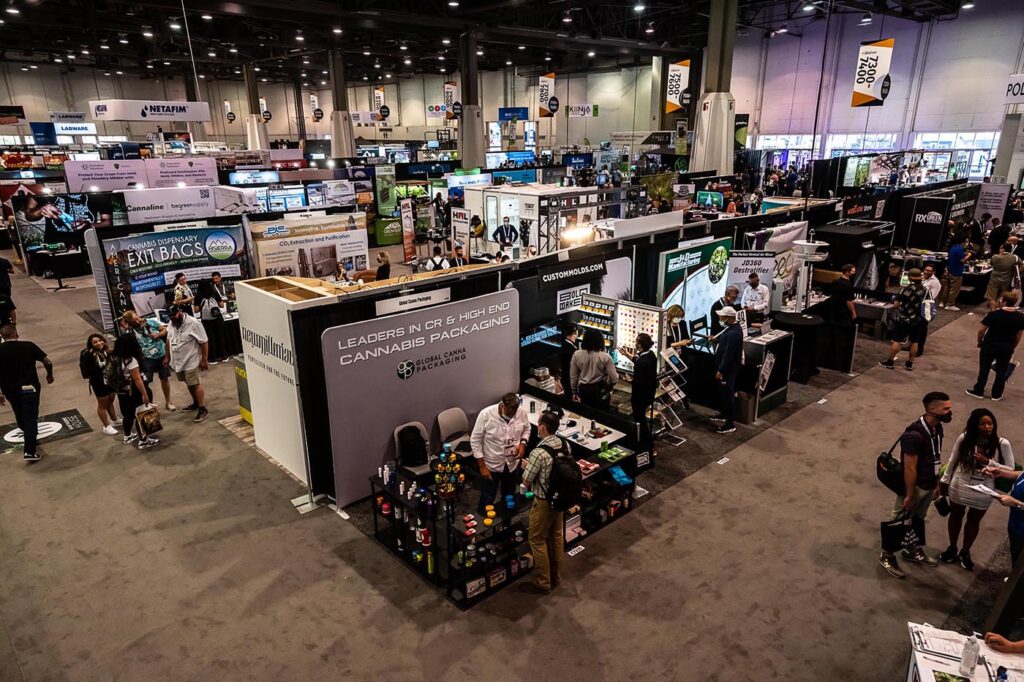
Peninsula booths
This type usually caps the ends of rows of inline booths but also may be placed side by side or back to back with another peninsula booth. Peninsulas offer three open sides (depending on show-floor configuration) for customer interaction; most measure twenty feet by twenty feet or larger, so they also provide more interior floor space.
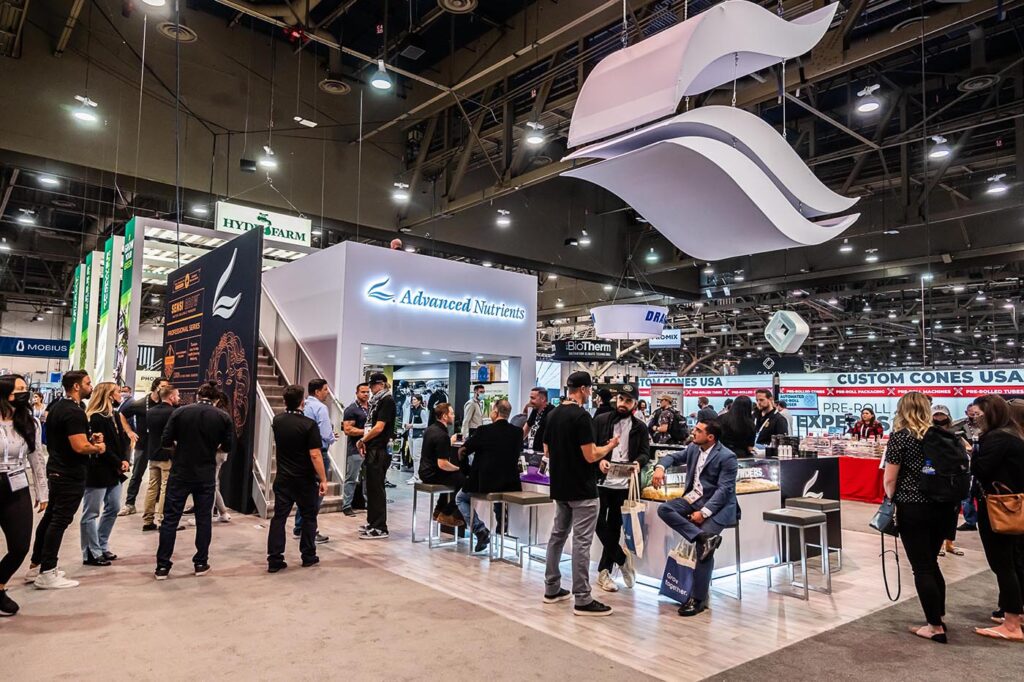
Perimeter booths
Perimeter booths are placed side by side with their backs to the perimeter walls. The wall adds height, allowing a display to expand upward instead of outward. Taller displays may attract more attention, reaping advantages in brand exposure.
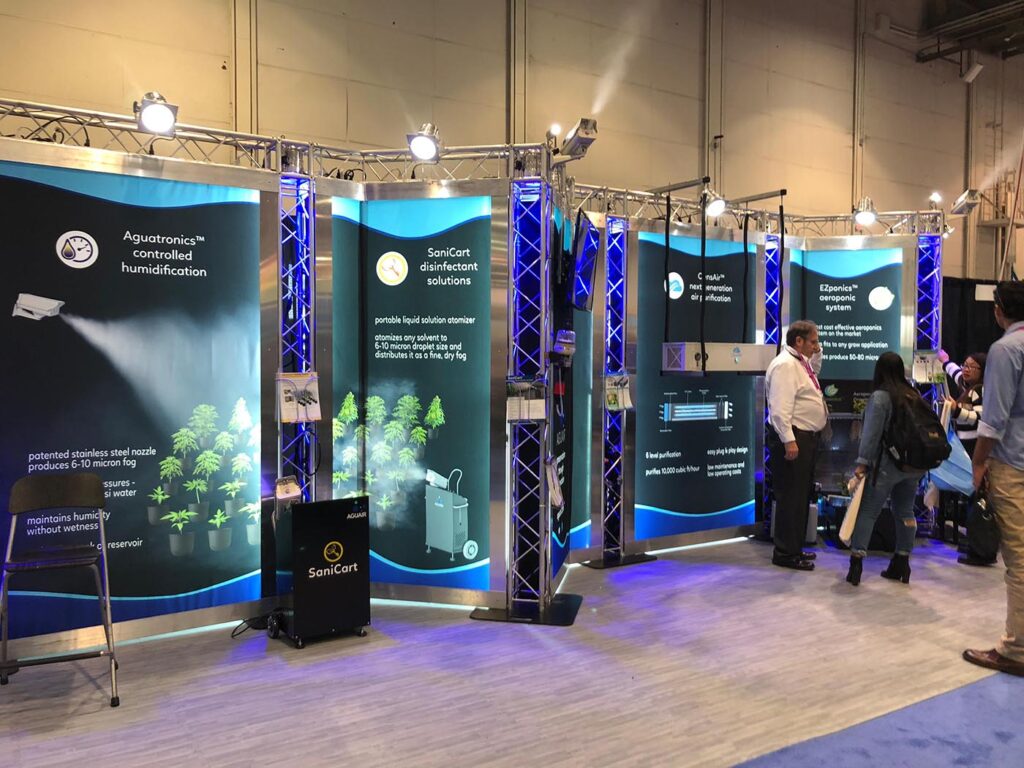
Island booths
Islands are the largest and most impressive displays on any exhibition floor. They’re also the most expensive to construct and place. Nevertheless, because they’re open all the way around and headspace (height) is limited only by the venue’s ceiling, island booths provide the most configuration flexibility and are difficult for attendees to overlook. Complex models may sport multiple decks and segmented interior spaces for special displays, private meetings, or interactive activations.
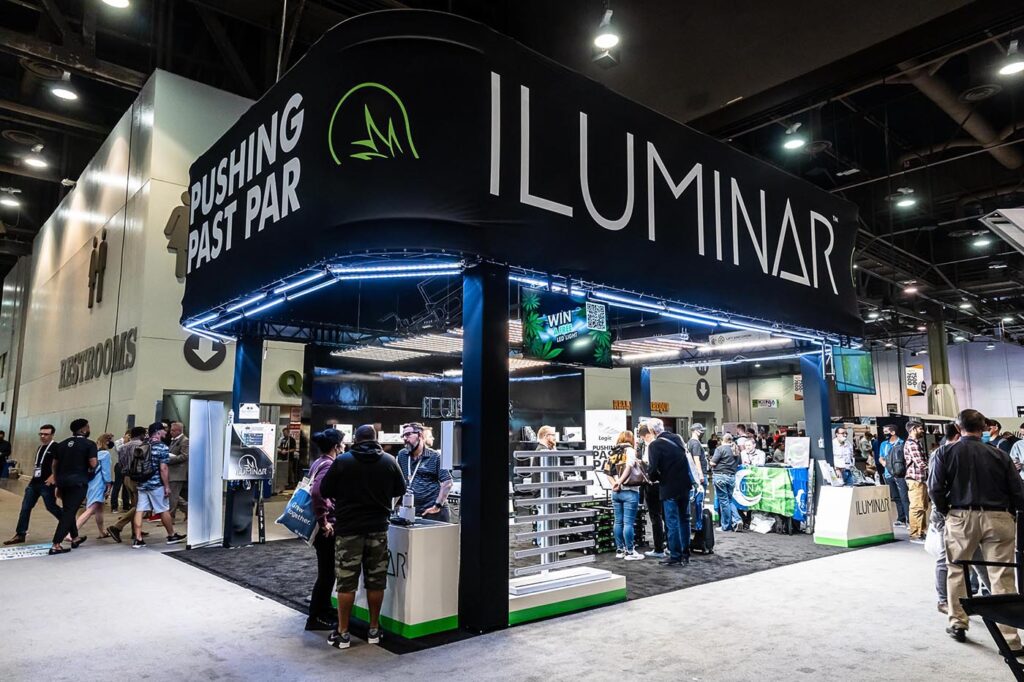
Costs: the breakdown
Typical booth sizes (in feet) are 10 x 10, 10 x 20, and 20 x 20, although island booths can be as large as 50 x 50. For design and production, expect to spend about $117 to $161 per square foot of floor space. Inline booths average about $1,370 per linear foot (or $13,700 for a 10 x 10). Double-deck islands average about $237 per square foot.
To limit trade show expenses, companies that exhibit at only a few shows a year may wish to consider renting instead of buying their displays. Booth rentals run about $100 to $150 per square foot depending on size, complexity, and the level of customization the company desires. That’s still a significant expense, but transportation, storage, and sometimes drayage are included in the rental fee.
When deciding whether to rent or buy, remember booths don’t last forever. Eventually, they’ll need refurbishing, updating to stay on trend or on brand, or replacing. For that reason, industry experts agree companies that plan to attend only one or two shows per year should rent; companies planning to attend three or more probably will find buying more cost-effective.
As for exhibit space… Exhibitor magazine pegs the cost of floor space at $20 to $138 per square foot depending on the venue, the location and size of the booth, and the quality of the traffic. At a median cost of $59 per square foot, a 10 x 10 inline space would run $4,500. To estimate total show expenses, multiply the cost of space by three. To host a 10 x 10 booth at a show with a median floor fee, then, budget a minimum of $13,500.







